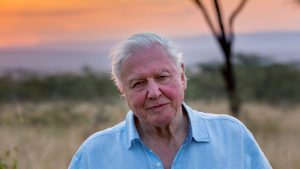Now 94 years old, David Attenborough has spent his life traveling the globe to capture remarkable footage of nature in all its glory. In shows that first aired on the BBC and were then distributed in the US and elsewhere, he has brought us closer to species we’d never seen and areas of our world we’ll never visit.
He calls “A Life On Our Planet” his witness statement of concern for the state of our planet due to the impact humans have had on it. I view the documentary as both a lament and a plea, because he spends the last 15-20 minutes explaining what can still be done to reverse the impact of climate change — a scientific manifesto that’s quite inspirational. That comes after he’s spent the first hour showing us the damage of global warming on our seas, our land, and our fellow Earthlings of all species. From the Amazon jungle to the Arctic ice caps, he explains the huge amount of biodiversity that has been lost, one of many indicators of an impending sixth mass extinction event.
But it’s not all depressing and miserable. Attenborough also shares footage from his decades of getting up close and personal with nature and with non-human animals, some so rare as to have never been seen on any other TV show. As always, those scenes are magnificently shot, as he has regularly employed some of the world’s best nature cinematographers.
“David Attenborough: A Life On Our Planet” was supposed to open in theaters in April, and it would have been wonderful to have seen on a big screen. Fortunately, its recent release on Netflix means many more people will view it. If only some of them were world leaders who could effect some of the policies he proposes.
I give this documentary a 9.5 out of 10.

